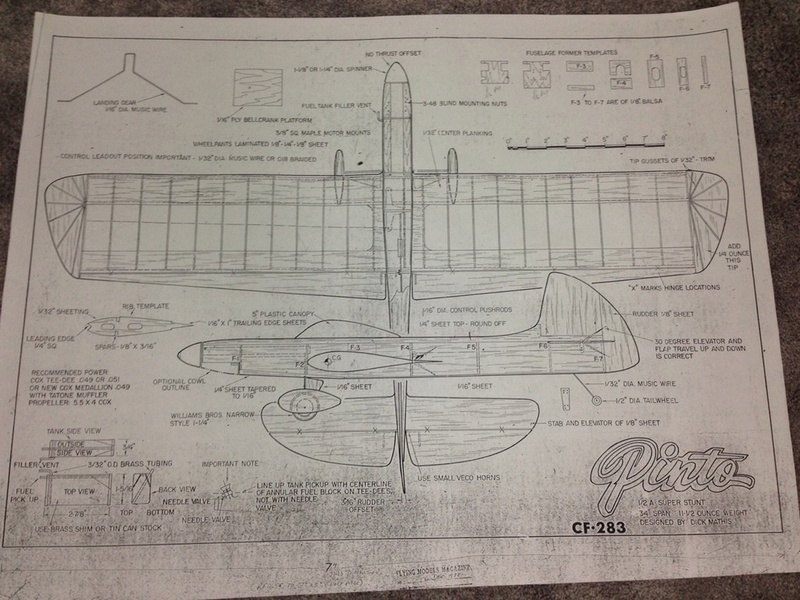If you look at ancient 60's !

. 35 things ' around 48 inch ' , as in the spars likely a 4 foot asheet , or the trailing edge . Plus some wing tips .
A LIGHT .15 thing , 36 inch instead . Particularly if its a SCHNEURLE . Maybe a old loop scavenged motor , 30 plus tips . Or If its for ' all weather ' use .
That gets you maybe 30 + 3 + 3 for 36 inch . Or 36 + 3 + 3 for 42 inch , maybe .
Some of the 1/2A T D jobs WERE 36 inch , so with a .10 Cu in , lower rever , as the TD is .089 or whatever anyway , should work good , with a shorter nose for the heavier engine .
Like wot Thisis .


foran example .
Look what happens when you put " Dee rice Oriental " in google pictures .

REMEMBERING ; If its OVERPOWERED you can put a smaller intake in it , & it should run even better . Whereas if its underpowered , youve got problems . But power to weight is the problem . NOT power to size .
In calm air , anyway .
Say a 8 x 4 is about the biggest prop youd put on a Pinto . So a Old OS max .15 or a newer SF / FP .10 are about The Same WEIGHT . And'll swing the same prop . 35 foot lines , maybe 50 in flat calm , for lotsa room .